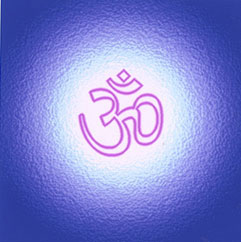
Looking Place
The Third eye is the gazing point for meditation. It is called the ajna chakra; located just above and between the eyebrows. It is referred to as the Goddess Star.
Dristhi is the gazing point on which one focuses while performing the asana. There are nine dristhis: the nose, between the eyebrows, navel, thumb, hands, feet, up, right side and left side.
Dristhi purifies and stabilizes the functioning of the mind. In the practice of asana, when the mind focuses purely on inhalation, exhalation, and the drishti, the resulting deep state of concentration paves the way for the practices of dharana and dhyana, the six and seventh limbs of Ashtanga yoga.
Instruction in pranayama can begin after one has learned the asanas well and can practice them with ease. Pranayama means taking in the subtle power of the vital wind through rechaka [exhalation], puraka[inhalation], and kumbhaka [breath retention]. Only these kriyas, practiced in conjunction with the three bandhas [muscle contractions, or locks] and in accordance with the rules, can be called pranayama. The three bandhas are “mula bandha, uddiyana bandha, and jalandhara bandha, and they should be performed while practicing asana. When mula bandha is perfect, mind control is automatic. In this way did Patanjali start yoga. By using mulabandha and by controlling the mind, he gradually gained knowledge of yoga.
Practicing asana for many years with correct vinyasa and tristhana gives the student the clarity of mind, steadiness of body, and purification of the nervous system to begin the prescribed pranayama practice. Through the practice of pranayama, the mind becomes arrested in a single direction and follows the movement of the breath. Pranayama forms the foundation for the internal cleansing practices of Ashtanga yoga.
